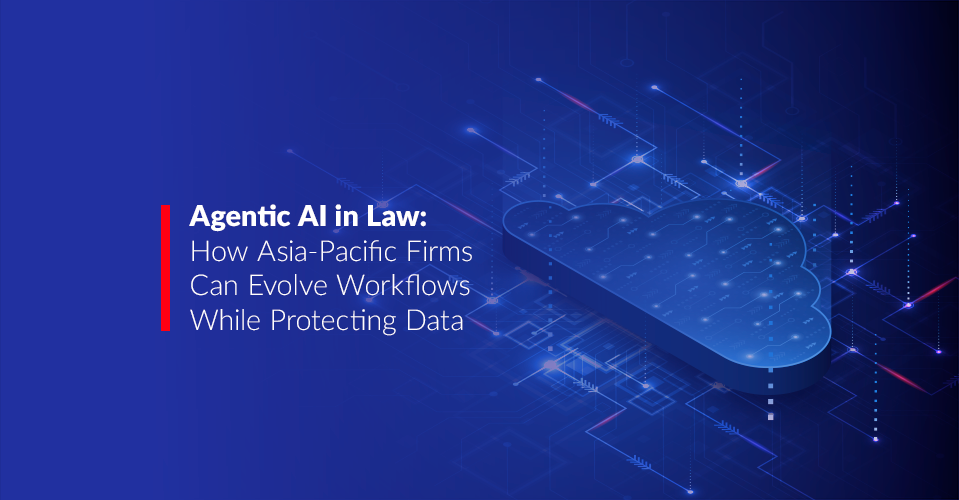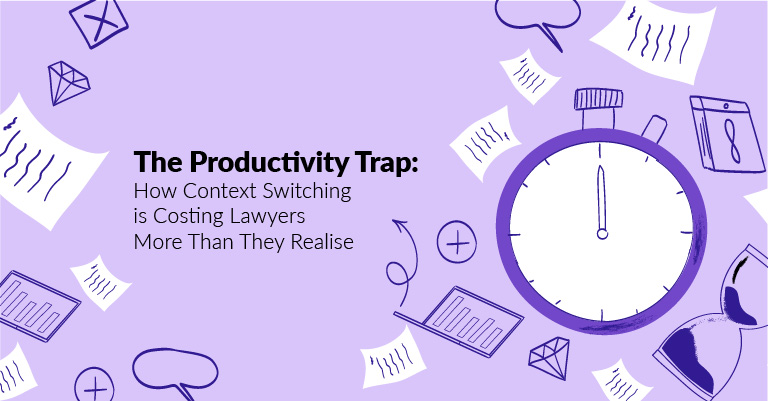Artificial intelligence is transforming the legal industry, there’s no doubt about that, but the conversation is shifting from chatbots and generative AI to something far more powerful: agentic AI. The...
In today’s fast-paced legal environment, the pressure to produce high-quality work quickly is intensifying. Yet, the very digital tools meant to boost productivity are often doing the opposite. Lawyers...
Companion animals now recognised as more than property in family law decisions. On 10 June 2025, major reforms to Australia’s Family Law Act 1975 (Cth) came into effect. For the first time, Australian...
Australian lawyers have a reputation for being pragmatic; and this trait shows when the conversation turns to artificial intelligence. There’s no blind rush to adopt the latest shiny tool, no “AI or...
Lexis+ AI ® transformed Whitehall & Associates, a growing law firm, into a dynamic force in institutional abuse and personal injury law. Partner Daniela Anicic explains how Lexis+ AI helped to facilitate...

Not since the days of King Hammurabi has the legal industry faced the magnitude of change it is facing today. Hammurabi was the first to actually codify and inscribe Babylonian law into stone, around 1760 BC. So the start of the legal industry – and a solicitor’s favourite term: “Written in stone” – can be traced back millennia.
The legal field has been largely untouched by the growing march of technology – stone gave way to paper, typewriter to computer. But everything else has remained much the same. No longer. These five technologies are rewriting the way law is practised.
1. Artificial intelligence (AI)
Put simply, AI helps machines learn from experience, adjust to new inputs and perform human-like tasks. Most AI tools rely on deep learning and natural-language processing. Using these technologies, computers can be trained to accomplish specific tasks by processing large amounts of data and recognising patterns within. In the legal landscape, AI-based tools are naturally suited to certain tasks, such as:
- Discovery: Natural-language processing and machine learning can be used in technology-assisted reviews to crunch through massive datasets for e-discovery. Predictive coding is faster, better, cheaper and more consistent than human-powered reviews. However, lawyers need to train the machine and transmit the details of the case to make e-discovery more relevant and accurate.
- Contract review: AI systems can engage in legal issue spotting. Drawing from the data contained in a law firm’s library of contracts, the AI system can tag relevant clauses from a particular contract and analyse fairness and risk, alerting the lawyer to potential pitfalls within the contract.
- Knowledge management: Lawyers are constantly trying to parse the overload of information they receive on a daily basis. With intelligent agents and other knowledge management and artificial techniques, it is possible to manage that flow of information. Techniques such as creating daily electronic newspapers, personalised resources and ‘push’ technologies to deliver updates and other information of interest can all be highly effective with tangible benefits.
2. Big data analytics
Big data analytics is the process of examining large and varied datasets to uncover hidden patterns, unknown correlations, market trends, customer preferences and other useful information that can help organisations make more informed business decisions. Big data is being used in the legal industry for:
- Descriptive analytics: Using technologies such as natural-language processing and machine learning, descriptive analytics can mine large volumes of historical legal data and turn it into actionable insights. The primary focus areas for descriptive analytics in law are identifying legal trends over time and analysing the behaviours of participants in litigation. Lawyers can use the information to better determine the likely outcomes of cases, develop winning legal strategies, estimate the value of a case, forecast litigation costs and make crucial decisions, including whether to settle or proceed to trial.
- Predictive analytics: Predictive analytics determines what is likely to occur based on past behaviour and current data. This functionality may prove useful in certain practice areas where cost analysis is crucial. These tools can identify cases with similar fact patterns, help predict when a case will close and how much is likely to be awarded.
- Prescriptive analytics: This extends beyond descriptive and predictive analytics to recommend specific courses of action. With prescriptive analytics, lawyers are able compare and contrast multiple scenarios based on historical trends and current data. While predictive analytics provides insight into potential outcomes based on data, prescriptive analytics provides actual advice, and it will continually refine its recommendations by tracking outcomes of decisions and incorporating that information in future recommendations.
3. New law
Located within the Coolalinga Shopping Centre in Darwin is Cartland Law, the first “law firm without lawyers”. Designed in typical law-firm style – complete with a library of legal texts – its latest application, Ailira, offers last will and testament services. It also assists in business structure and asset protection information and documentation.
There is also the chatbot lawyer that overturned 160,000 parking tickets in London and New York. ‘New law’ is as much about technology as it is about creating a new way of practising law. Technology is assisting lawyers to shake off the bugbear of traditional law, the billable hour and fixed-rate fees. Lawyers are able to do so because much of the grunt work is now taken care of by AI-based services.
4. Blockchain
A blockchain is a decentralised, distributed and public digital ledger that is used to record transactions across multiples computers so the record cannot be altered retroactively without the alteration of all subsequent blocks and the consensus of the network. In the legal sector, this technology can be used for:
- Smart contracts: With blockchain technology, it is possible to enter into a legal contract that is wholly digital and does away with lawyers completely. This will significantly reduce the cost and friction of drawing up legal contracts.
- Intellectual property: The advent of digital has seen the creation of vast amounts of intellectual property, mostly by small artists. Protecting digital copyright is both expensive and time-consuming. However, with blockchain it becomes easier to establish ownership over content and therefore reduce costs and time of arbitration.
- Property rights: Similar to digital rights, a blockchain is a much more efficient and cheaper method of storing details of property ownership. This is especially true in the developing world where land records – still stored on paper – are subject to unlawful manipulation.
- Chain of custody: This technology can be applied to not only track the custody of documents, but also to store the documents themselves. The digital ledger maintains a permanent record of the chain of custody – with the evidence digitally preserved, no evidence ever gets thrown out. This also eliminates the need for testimony about the preservation of the chain of custody.
- Notary public: Currently, notary publics (or general notaries) are used to confirm and verify signatures on legal documents, such as deeds and contracts. Using blockchain technology, these documents can be preserved digitally as part of a digital ledger.
5. Cloud computing
Cloud computing is the delivery of computing services like servers, storage, databases, networking, software, analytics and more over the internet. Cloud applications are easily accessible from anywhere and on any device with an online connection.
This essentially creates a whole host of opportunities for lawyers – especially small law firms – to store and retrieve information as and when they need it. Apart from its easy accessibility, the cloud is a cheaper alternative to hosting servers. It also helps lawyers provide their clients with better access to relevant information.
The usefulness of these technologies in the legal sector is clear, as is the uptake of modern tools to assist lawyers and streamline firms. The question is not when technology will change how law is practised, but by how much.






